Utilize momentum indicators to enhance trading strategy by quantifying price velocity and evaluating market trends. Incorporate MACD and RSI to identify entry and exit points. Enhance decision-making by aligning signals with market trends and confirming with filters. Manage overtrading risks by waiting for confirmation signals and considering broader market trends. Apply zero line crossovers for key signals and capitalize on opportunities. Analyze market trends, combine with momentum indicators, and utilize price patterns for accurate signals. Historical data analysis and data-driven decisions improve risk management. Analyzing market trends aids in informed trading decisions. Utilize indicator signals for precise trading decisions and enhance performance.
Understanding Momentum Indicators
Momentum indicators are essential tools in technical analysis that quantify the velocity of price movements to evaluate the strength or weakness of market trends. These indicators, such as the Moving Average Convergence Divergence (MACD) or Relative Strength Index (RSI), measure the rate of change in prices. By doing so, they provide traders with insights into the speed at which prices are moving, indicating the momentum behind a particular trend.
Traders use these indicators to identify potential entry and exit points in the market. When a momentum indicator crosses above or below a central line, such as the zero line, it can signal shifts in market sentiment and potential trading opportunities. Traders rely on momentum indicators to spot overbought or oversold conditions in the market, helping them make informed decisions about when to buy or sell assets.
To enhance the accuracy of these indicators, traders often incorporate additional filters, such as considering broader market trends or specific price patterns, to refine their trading strategies.
Identifying Entry and Exit Points
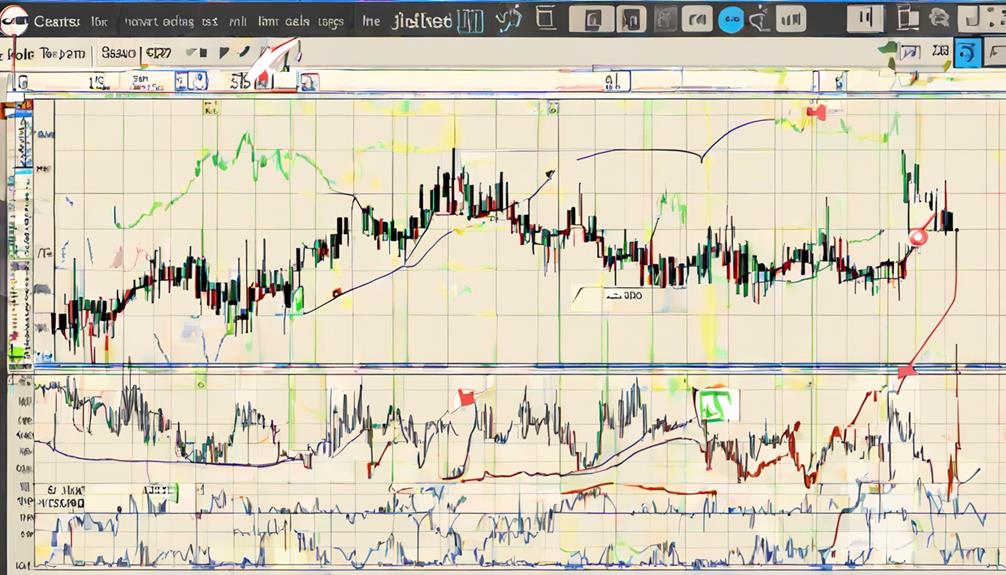
When pinpointing ideal moments to enter or exit trades, strategic integration of momentum indicators with complementary tools can greatly enhance decision-making in financial markets.
Momentum indicators can help traders identify potential entry points as they cross above the zero line, indicating a shift towards bullish momentum. To enhance accuracy in determining entry and exit points, it is beneficial to utilize price patterns alongside momentum indicators.
Additionally, entry signals are more reliable when they align with the overall market trend, reinforcing the momentum indicator's signal. When considering exit points suggested by momentum indicators, it is essential to validate these signals by evaluating the broader market trend, particularly in a downtrend scenario.
Applying filters such as volume analysis or monitoring market trends can further refine entry and exit signals, thereby reducing transaction costs associated with frequent trading activities. By incorporating these strategies, traders can make more informed decisions when entering or exiting positions based on momentum indicators and additional confirming factors.
Confirming Signals With Filters
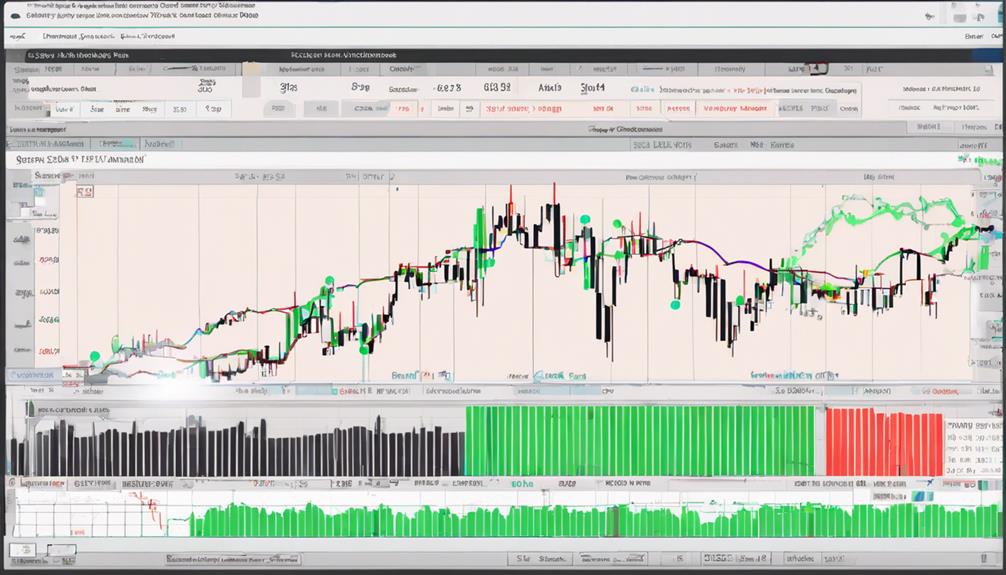
To enhance the reliability of momentum indicator signals, incorporating filters that consider broader market trends can provide valuable confirmation for traders. Filters act as a supplement to the trend-following momentum indicator, helping traders make more informed decisions.
By analyzing high volume or specific price patterns alongside momentum signals, noise can be reduced, and the accuracy of the signals can be improved. Some investors choose to only act on momentum signals when the broader market trend aligns with the signal direction, adding an extra layer of confirmation.
Additionally, exit signals from momentum indicators may be more reliable if the broader market is in a downtrend, signaling a potential reversal or continuation of the current trend. Utilizing filters not only enhances signal quality but can also help reduce transaction costs associated with frequent trading based on momentum signals, making the overall trading strategy more efficient and cost-effective.
Reducing Overtrading Risks

Excessive trading activity, known as overtrading, poses significant risks to traders' portfolios and can result in unnecessary losses if not managed effectively.
To reduce overtrading risks, traders can incorporate filters when using momentum indicators. These filters could include criteria such as high trading volume or specific price patterns to help limit the number of trades initiated solely based on momentum signals.
Additionally, waiting for confirmation signals from other technical tools or market conditions can help traders avoid impulsive trades. Considering the broader market trend is also essential as it can validate the momentum signals and discourage overtrading in potentially volatile market conditions.
Applying Zero Line Crossovers
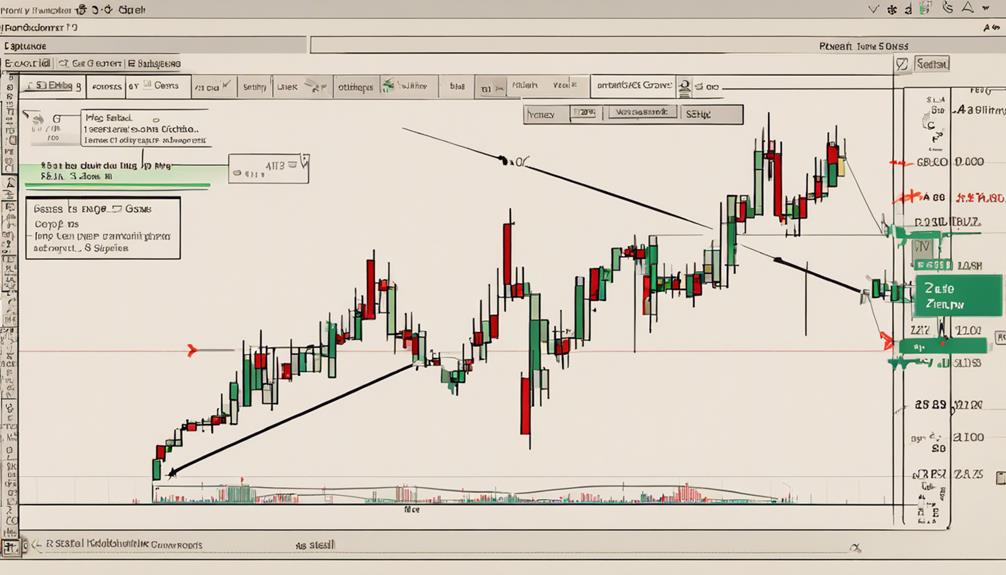
In trading strategy development, zero line crossovers serve as key signals for identifying shifts in momentum and potential trend reversals.
When a momentum indicator such as the Relative Strength Index (RSI) or Moving Average Convergence Divergence (MACD) crosses above the zero line, it may indicate a buy signal, suggesting a favorable entry point.
Conversely, a crossover below the zero line could signal a sell point, indicating an opportune exit. These zero line crossovers are valuable for traders seeking to enhance their strategies by recognizing changes in momentum that could lead to trend reversals.
By understanding the implications of these crossovers, traders can make more informed decisions, especially when combined with other indicators like overbought and oversold conditions.
Incorporating zero line crossovers into trading strategies can improve effectiveness and help traders capitalize on market opportunities. Analyzing these momentum indicator crosses is vital for identifying bullish divergence and optimizing trading outcomes.
Leveraging Broader Market Trends

Analyzing broader market trends provides vital insights for interpreting momentum indicator signals in trading strategies. Incorporating sector performance data can offer a more thorough view of market dynamics, enhancing the accuracy of momentum signals.
Timing market entry based on a thorough understanding of broader market trends can help traders navigate volatility and make well-informed decisions.
Market Trend Analysis
How can leveraging broader market trends enhance the reliability of momentum indicator signals in trading strategies?
Analyzing the overall market direction alongside momentum indicators can greatly improve the accuracy of trade signals, leading to more reliable trading decisions. By incorporating market trend analysis, traders can better identify entry and exit points suggested by momentum indicators, reducing noise and filtering out false signals. This combination not only enhances trade signals accuracy but also aids in improving decision-making in trading strategies.
Utilizing broader market trends acts as a valuable tool in confirming the signals provided by momentum indicators, ultimately assisting traders in making more informed and successful trade decisions.
- Market trend analysis validates momentum indicator signals
- Overall market direction confirms entry and exit points
- Broader market trends help reduce noise and false signals
Incorporating Sector Performance
By examining sector performance, traders can gain valuable insights into market trends and potential opportunities within specific industries, enhancing their ability to make informed decisions based on broader market directions.
Analyzing sector performance helps identify stronger trends and correlations with individual stocks, providing an indication of market sentiment. Understanding how different sectors are performing is essential as it can influence the momentum of individual stocks.
Additionally, monitoring sector rotation and shifts in performance enables traders to stay ahead of market changes and adjust their trading strategies accordingly. By incorporating sector performance into their analysis, traders can effectively leverage broader market trends to optimize their trading strategies and capitalize on emerging opportunities.
Timing Market Entry
When considering market entry timing, leveraging broader market trends can enhance the accuracy of momentum indicators for confirming signals.
- Broader market trends act as filters to improve the accuracy of momentum indicator signals.
- Analyzing market trends can help reduce false signals and enhance trading decisions.
- Incorporating broader market analysis alongside momentum indicators can provide additional confirmation for timing market entry.
Utilizing Price Patterns
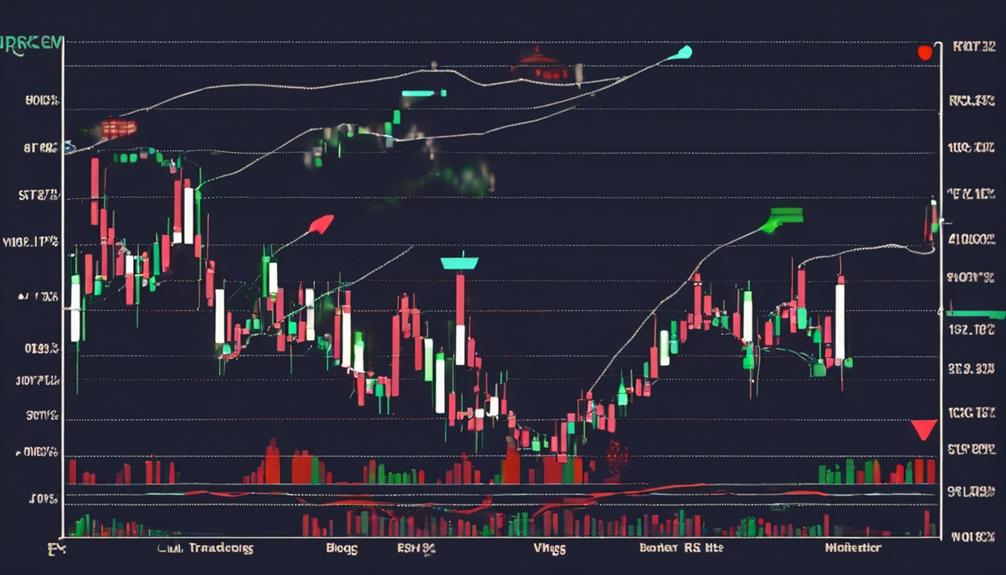
Price patterns play a significant role in enhancing trading strategies when used in conjunction with momentum indicators for confirming trade signals. By recognizing patterns like head and shoulders or double tops/bottoms, traders can anticipate potential trend reversals or continuations, aiding in the identification of best entry and exit points.
These patterns offer visual cues that complement the numerical data provided by momentum indicators, enabling traders to conduct a thorough analysis before making informed decisions. Combining the insights from price patterns with momentum indicators can improve the accuracy of trade signals, as the visual representation of patterns adds another layer of confirmation to the numerical data.
Understanding the various price patterns and their implications empowers traders to make more informed decisions, thereby increasing the effectiveness of their trading strategies. By leveraging both price patterns and momentum indicators, traders can enhance their ability to navigate market fluctuations and capitalize on profitable opportunities.
Making Informed Trading Decisions
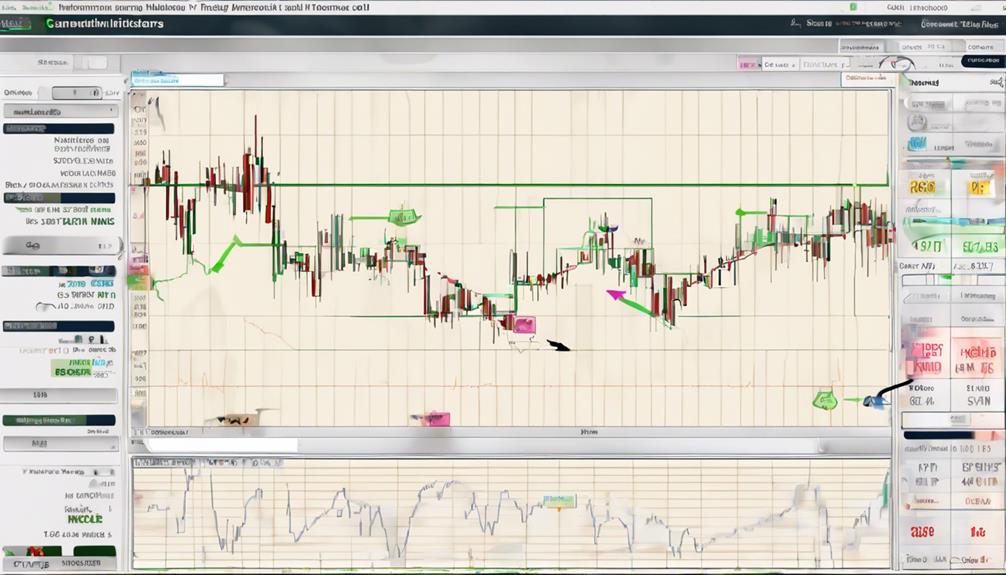
Momentum indicators play a crucial role in guiding traders towards data-driven decisions by offering insights into market trends and potential entry/exit points.
Through analyzing indicator signals, traders can better understand the underlying momentum of an asset, allowing for more informed trading strategies.
Data-Driven Trading Decisions
Analyzing historical data through momentum indicators is vital for making informed trading decisions in a data-driven approach to trading strategy. By leveraging data-driven insights, traders can enhance their understanding of asset prices and effectively determine entry and exit points. Utilizing quantitative data analysis with momentum indicators also plays an important role in improving risk management strategies and optimizing trade timing based on historical trends. Additionally, incorporating momentum indicators in trading decisions can help reduce emotional bias and guarantee a more consistent approach to trade execution. Ultimately, historical data trends revealed through momentum indicators offer valuable signals for adjusting trading strategies and maximizing returns.
- Enhance understanding of asset prices
- Improve risk management strategies
- Reduce emotional bias
Analyzing Market Trends
Studying market trends involves a careful examination of price movements' direction and strength to facilitate informed trading decisions. By analyzing the trend line and evaluating the price's momentum, traders can identify potential entry and exit points.
Understanding the market trend enables traders to interpret momentum indicator signals effectively. This combination provides a thorough view of market sentiment, helping traders make informed decisions.
Monitoring price trends alongside momentum indicators allows for the adaptation of trading strategies to changing market conditions. Utilizing these tools empowers traders to capitalize on opportunities and optimize their trading outcomes based on data-driven insights.
Informed decisions rooted in trend analysis and momentum indicators are essential for successful trading strategies.
Utilizing Indicator Signals
Utilizing indicator signals is essential for making informed trading decisions that are rooted in data-driven insights and market analysis.
- Momentum indicators help identify potential entry and exit points based on price trends and rate of change.
- Crossing the zero line on a momentum indicator can signal entry or exit opportunities in trading.
- Entry signals are often observed when the momentum indicator crosses above zero, indicating positive momentum.
Incorporating filters such as broader market trends and price patterns can greatly enhance the accuracy of momentum indicator signals. By carefully analyzing these signals, traders can make more precise decisions and better navigate the complexities of the financial markets.
Frequently Asked Questions
How to Use Momentum Indicator for Trading?
Utilizing the momentum indicator for trading involves analyzing trend dynamics, market momentum, and price action. Incorporating volatility measures and technical analysis aids in identifying entry signals and exit strategies.
Effective risk management and understanding trading psychology are essential components. Backtesting results can validate the efficacy of momentum indicators in enhancing trading strategies.
Integrating these elements with the momentum indicator enhances decision-making precision and trading outcomes.
Do Momentum Trading Strategies Work?
Momentum trading strategies have shown effectiveness in exploiting short-term price movements based on recent trends. Market momentum analysis reveals that stocks exhibiting strong momentum often continue their price movements in the same direction.
Trend following, trading signals, and price momentum are key components of successful momentum strategies. Understanding trading psychology, implementing risk management, and backtesting strategies are vital for optimizing momentum trading effectiveness and steering through volatility in the market.
What Is the Most Effective Momentum Indicator?
Amongst the various momentum indicators, the Relative Strength Index (RSI) stands out as one of the most effective tools for traders. RSI's ability to measure price momentum and identify overbought or oversold conditions makes it a valuable asset in decision-making.
Traders frequently combine RSI with other indicators like moving averages, MACD histogram, and stochastic oscillators for enhanced trading strategies, confirming trends and improving entry/exit points.
How Is Momentum Used in Trading?
Momentum analysis in trading involves evaluating the rate of change in price movements to gauge the strength of trends and potential reversals. Traders utilize momentum indicators, such as oscillators like RSI and Stochastic Oscillator, to generate signals for entry and exit points.
Understanding market momentum, price momentum, and trend following is essential in developing effective momentum trading strategies. Incorporating momentum signals in trading decisions can enhance risk management and overall trading performance, considering trading psychology and market dynamics.
Conclusion
To sum up, the utilization of momentum indicators in trading strategies can enhance decision-making processes by providing valuable insights into market trends and potential entry and exit points.
By incorporating filters, zero line crossovers, and price patterns, traders can reduce risks associated with overtrading and make informed trading decisions based on data-driven analysis.
Leveraging broader market trends can further optimize trading outcomes, resulting in a more strategic and efficient approach to trading.


